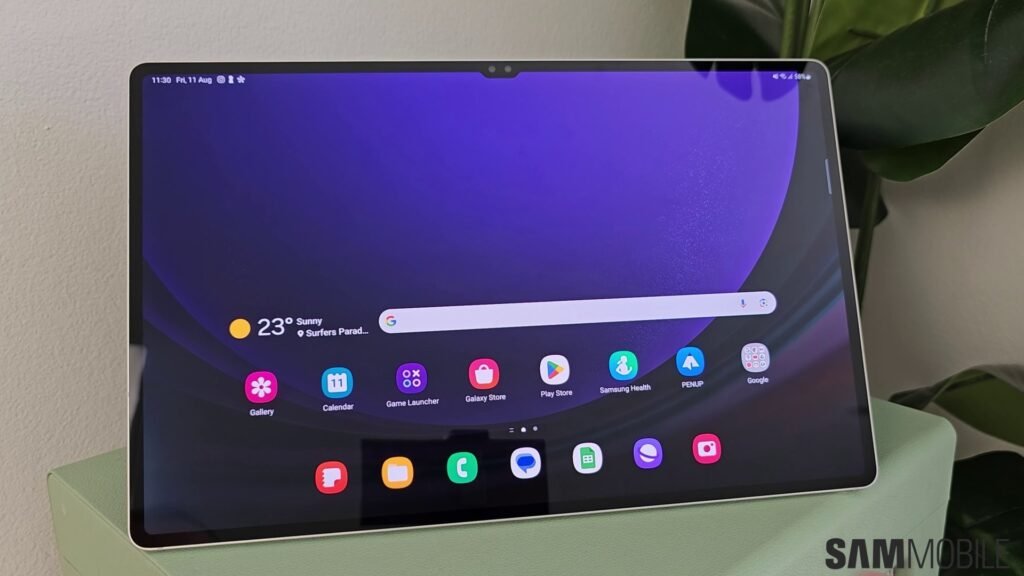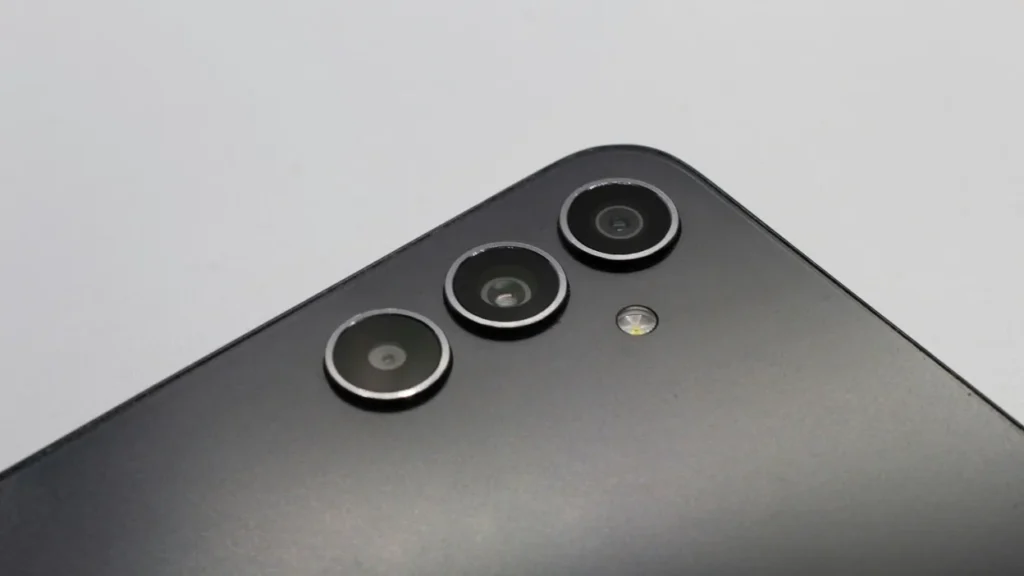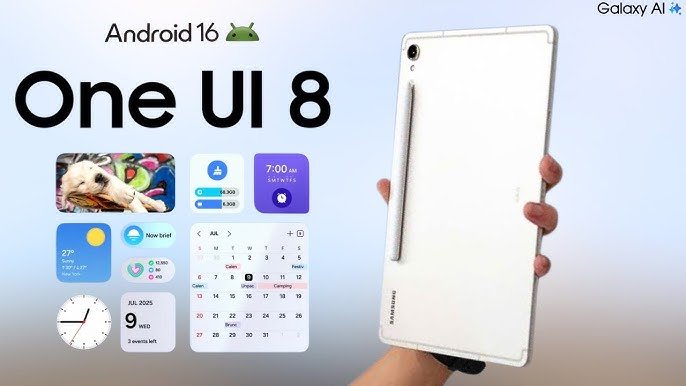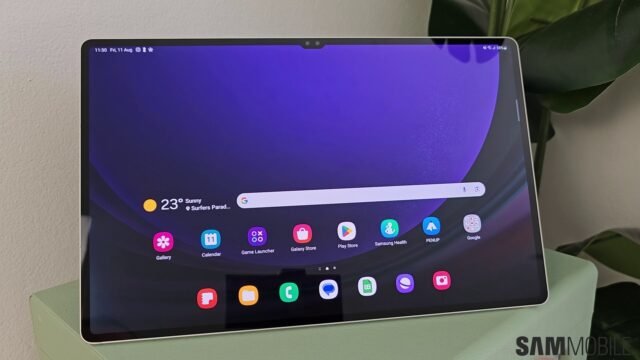In a well-timed move for users across East Africa, Samsung has officially begun the rollout of the Android 16-based One UI 8 update for its premium tablet line—the Galaxy Tab S9 series. The update brings a powerful mix of productivity-boosting, AI-enhanced and user-experience enhancements, which many regional users have been waiting for. This article walks you through what’s new, why it matters in East Africa, and key steps to prepare for the upgrade.

Table of Contents
What’s in the update for Samsung Galaxy Tab S9 users
For owners of the Galaxy Tab S9, Tab S9 Plus and Tab S9 Ultra in Kenya, Uganda, Tanzania and surrounding East African markets, the update arrives with region-specific firmware builds—such as X716BXXU5DYJ1 on the S9 (SM-X716B) and X916BXXU5DYJ1 on the Ultra (SM-X916B).
But beyond version numbers, this is more than a routine patch: it’s a feature‐rich upgrade targeted at reshaping your tablet experience into something closer to a smart, large-screen productivity machine. Highlights include:
- Expanded “Galaxy AI” toolkit: real-time call captions, instant AI-Select access without delay, and emergency-alert translation capabilities.
- A significantly enhanced DeX mode (Samsung’s desktop-style interface): widgets on external monitors, full screen rotation, WQHD resolution support and smoother switching between tablet and DeX views, according to SamMobile.
- Improved multitasking: the ability to display up to three apps side by side in landscape, with support for minimised edge windows and drag-and-drop between windows, is more fluid than before.
- Interface refinements: a dynamic moving clock on lock screen that adapts to wallpaper, flexible widget sizes (including new 2×2 tiles), and enhanced built-in apps such as Notes (Sticky Notes feature), My Files (multi-pane view) and more.
If you own a Galaxy Tab S9 series device in the region, now is an excellent time to manually check for the update under Settings → Software update → Download and install.
Why this matters for East Africa (and you)
From Abuja to Nairobi, device users appreciate not just new features, but whether those updates land in their region and how meaningful they are for everyday use. The arrival of One UI 8 in East Africa signals a couple of important things.
Firstly, users in East Africa are being included in a tier that often lags behind North America and Europe in roll-outs. That said, the inclusion here means Samsung sees this region as important.
Secondly, for tablet users—students, creatives, remote workers, teachers—the update doesn’t just fix bugs—it upgrades capability. With the new multitasking and DeX enhancements, your Galaxy Tab S9 tablet can more plausibly replace a laptop for many workflows: editing documents while keeping reference apps open, using an external screen, running collaboration tools, etc.
From a practical viewpoint, if you were still using Android 15 or earlier on your device, this is a meaningful leap. On the flip side: note that while the feature set is rich, the update currently comes bundled with the September 2025 security patch, not the latest one available. That’s a minor caveat, but overall the trade-off seems well worth it for most.

What to do (and what to check) before installing
Rolling out a major OS shift is thrilling — but to avoid disruption, a few practical preparation steps can make the experience smoother:
- Backup your data: Always the first rule when updating major software. Secure your important files, photos, settings so that if anything goes awry, you can restore.
- Ensure adequate battery and a stable Wi-Fi connection: This update is sizeable — being on Wi-Fi and having at least 50% battery (or plugging in) helps avoid interruption.
- Check available storage: If your tablet is near full, the install may fail or you may suffer post-update sluggishness. Take time to clear up unnecessary files or apps.
- Update your apps post-install: Some apps (especially built-in Samsung ones like Notes, My Files) may need updating to fully take advantage of the new UI and features.
- Be patient: rollout may be staged: Even though it’s announced for East Africa, not every country or carrier will receive the update simultaneously. If you don’t see it yet, check again in the next few days.
- Dive into the new features intentionally: Try the enhanced multitasking (three-app view), explore the new DeX widgets on an external monitor if available, and engage the AI tools. That way, you’ll experience more than “just another update.”
- Keep an eye on community feedback: While neither major issues nor widespread complaints have surfaced for this specific roll-out yet, software updates can behave variably across regions. For example, in South Korea, a related roll-out for other devices was paused, according to Android Central.

A strong upgrade worth installing for Samsung Users
For East African users of the Galaxy Tab S9 family, the arrival of the Android 16–based One UI 8 update is a strong moment. It’s not just incremental; it’s transformative for how you can use your tablet.
If you’re someone who uses your tablet for more than web-surfing and video—if you’re sketching, editing, multitasking or using an external display—it’s easy to recommend installing the update sooner rather than later. It will likely feel like you’re using a “new” device in terms of capability, even if the hardware is unchanged.
If instead you use your tablet more casually (reading books, streaming movies, light apps), you may not feel the difference immediately, but nonetheless, you’re getting upgraded infrastructure and features that will enhance longevity and productivity.
In short: Samsung has delivered a meaningful update in this region—if you own a Galaxy Tab S9 series device in East Africa, go ahead and claim it. And if you like, I can keep tabs on when the rollout reaches Nigeria and other West African markets and let you know as soon as your variant is cleared.
Join Our Social Media Channels:
WhatsApp: NaijaEyes
Facebook: NaijaEyes
Twitter: NaijaEyes
Instagram: NaijaEyes
TikTok: NaijaEyes





